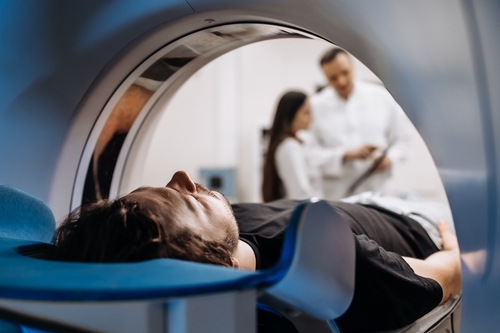When a person sustains a brain injury, timely and accurate diagnosis is essential for effective treatment and recovery. One of the primary tools used by healthcare professionals to assess brain injuries is medical imaging techniques, particularly CT (computed tomography) and MRI (magnetic resonance imaging) scans.
Both of these imaging modalities offer valuable insights into the extent and location of brain damage, but they differ in terms of technology, applications, and the types of injuries they best detect. Understanding when and why a doctor might choose one over the other can help patients and their families better navigate the diagnostic process following a brain injury.
If you have been diagnosed with a brain injury caused by another party’s negligence, we are here to help. At Shapiro, Washburn & Sharp, we represent traumatic brain injury victims on a contingency-fee basis, meaning you won’t pay any legal fees unless we win your case.
Contact us today at 833-997-1774 for a free consultation.
What Is the Difference Between a CT Scan and an MRI for Brain Injury?
CT scans and MRIs are both commonly used to assess brain injuries, but they utilize different technologies to create images. A CT scan uses X-rays to take cross-sectional images of the brain, while an MRI uses powerful magnets and radio waves to produce detailed images of the brain’s structures. The key differences between the two lie in their resolution, speed, and the types of injuries they detect.
CT scans are typically faster and are often used in emergency situations when a quick assessment is needed, such as in cases of traumatic brain injury (TBI) or when a patient may have internal bleeding.
MRIs provide more detailed images, making them better suited for detecting smaller brain injuries, including soft tissue damage or microscopic changes in the brain’s structure.
While CT scans are effective at identifying acute injuries like skull fractures or brain hemorrhages, MRIs are more sensitive to subtle injuries such as brain contusions, concussions, and chronic traumatic brain injury.
When Should a CT Scan Be Used for Brain Injury Diagnosis?
A CT scan is typically the first imaging tool used in the evaluation of a brain injury, especially in emergency settings. If a patient experiences a traumatic brain injury, such as a blow to the head, a CT scan can quickly reveal major injuries such as skull fractures, bleeding (hemorrhage), or swelling. It is also useful in detecting life-threatening conditions like subdural hematomas or epidural hematomas, which require immediate surgical intervention.
CT scans are highly effective in identifying acute injuries and provide results within minutes, making them essential in emergency rooms. However, while a CT scan is invaluable in detecting severe brain injuries, it is less effective at identifying subtle changes in brain tissue, especially in cases of mild traumatic brain injury or concussion. A CT scan is generally used as an initial diagnostic tool to rule out major injuries, and follow-up MRIs may be conducted for further evaluation if needed.
When Should an MRI Be Used for Brain Injury Diagnosis?
An MRI scan is often used after a CT scan to provide a more detailed view of the brain, particularly if the initial CT scan does not reveal significant injuries or if the doctor needs to monitor the recovery process of a brain injury. MRIs are particularly beneficial for detecting soft tissue injuries, subtle brain damage, and abnormalities that may not be visible on a CT scan, such as diffuse axonal injury, which occurs when the brain’s white matter is sheared or torn due to rapid head movement.
MRIs are also ideal for evaluating conditions like brain swelling, contusions, or microhemorrhages that may occur in the aftermath of a concussion. Additionally, MRIs can help assess the long-term effects of brain injuries, making them valuable in the management of chronic conditions like post-concussion syndrome. Unlike CT scans, which use radiation, MRIs do not expose the patient to any ionizing radiation, making them a safer choice for repeated imaging, especially in pediatric patients or those requiring ongoing evaluation.
Can Your Injury Law Firm Help?
If you’ve been diagnosed with a brain injury or are experiencing symptoms after an accident, it’s essential to seek both medical and legal help. At Shapiro, Washburn & Sharp, our brain injury attorneys have been representing clients in traumatic brain injury cases for decades, helping them recover the compensation they deserve. We handle cases on a contingency-fee basis, so you won’t pay any legal fees unless we win your case.
Call us today at 833-997-1774 to schedule a free consultation with a brain injury lawyer and let us help you get the care and compensation you need.
